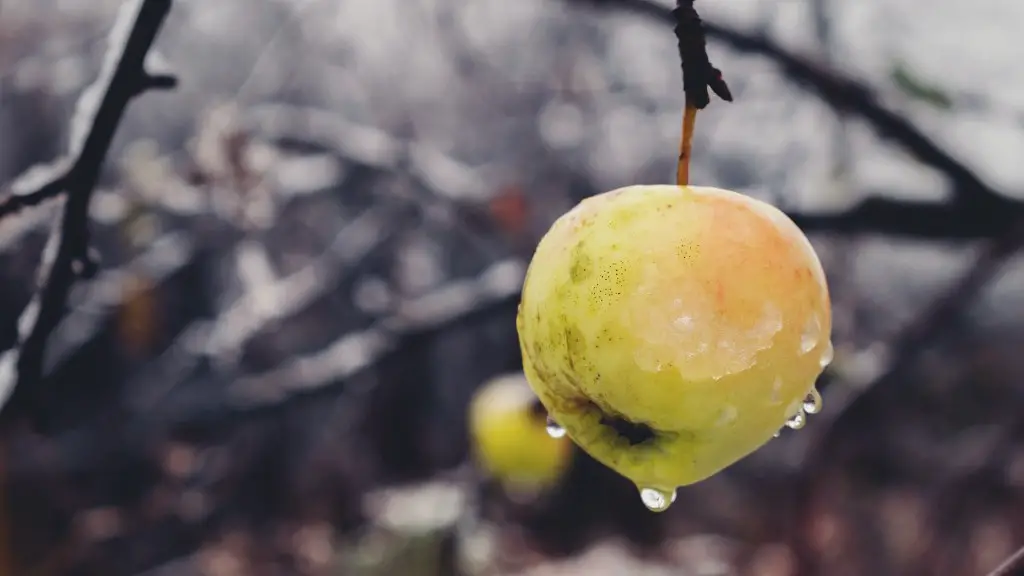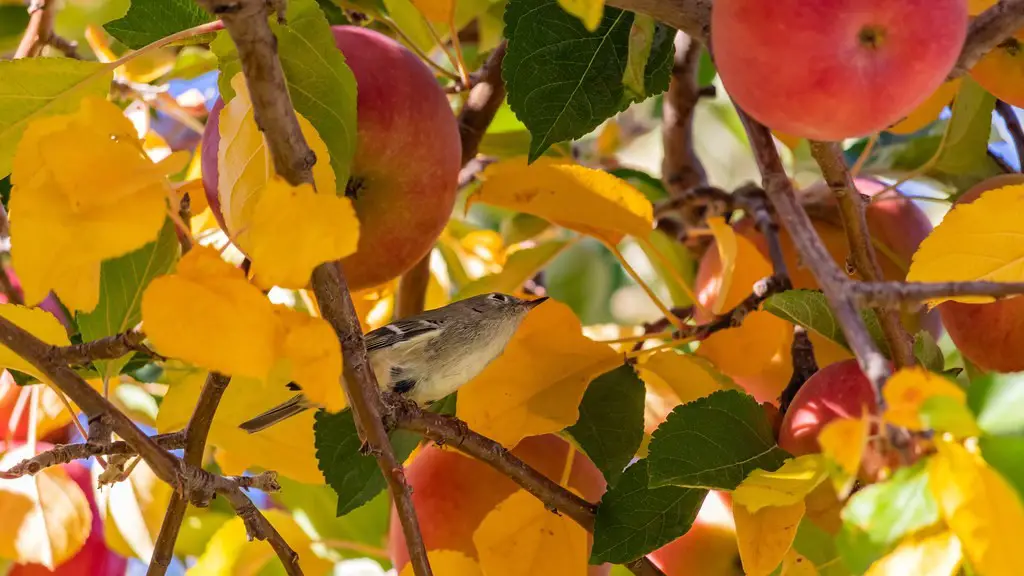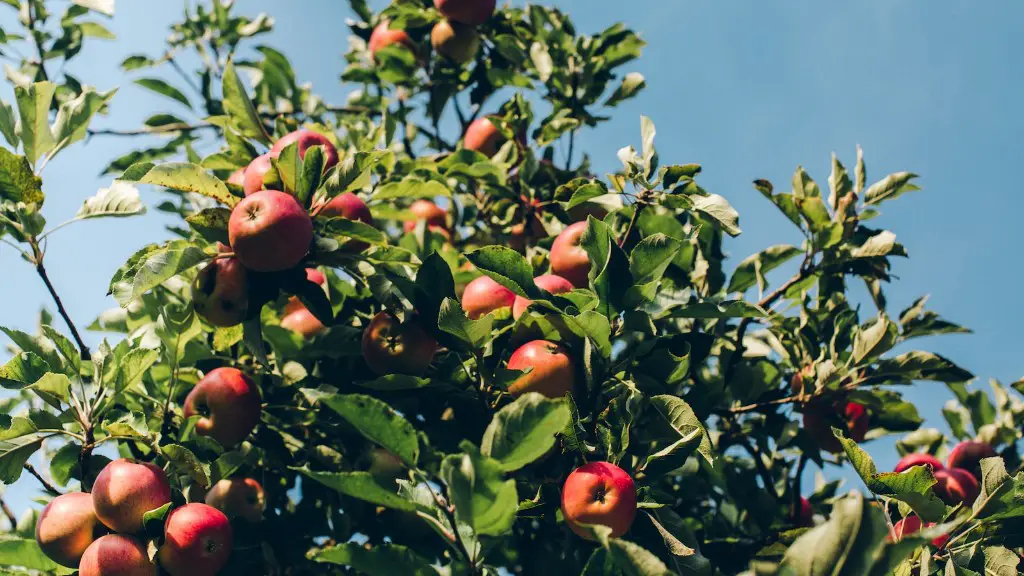Springtime is the best time to plant an apple tree, as long as the ground is thawed. When the ground is warm and dry, it’s the optimal time to plant the tree. It’s important to water the apple tree consistently so that the roots can establish themselves in the soil. The soil should be moist and well-drained. It’s also essential to situate the tree in a spot that receives plenty of sunlight during the day. If you are planting a dwarf variety, you may also want to consider a spot that is protected from strong winds.
When planting an apple tree, dig a hole that is wide and deep enough to accommodate the roots of the tree. If the tree is a grafted tree, make sure the graft union is slightly above ground level to prevent the tree from being over-watered. Once you have positioned the tree in the hole, backfill the area with the removed soil, adding compost and a 2-inch layer of mulch in order to keep the roots moist and weed-free. Lastly, water the tree thoroughly.
Land Preparation for Planting an Apple Tree
Before you begin planting the apple tree, it’s important to prepare the land. If the land is rocky or covered in grass, use a spade to loosen the soil and remove the rocks and roots. If you are planting on a hillside, it’s important to make sure the bed is level and slightly raised so that water does not run off the surface. For more compacted soil, you may need to add a layer of compost or composted manure to provide additional nutrients to the tree.
When planting the apple tree in a new area, it’s important to remember to rotate cropping and not plant the same type or variety of apple tree year after year. This will help to prevent insect and disease build-up in the soil and provide your tree with the right balance of nutrients.
Finally, it is essential to give the tree adequate room to grow. Most apple trees need at least 10-15 feet of space between them and other trees or structures. If planting multiple trees, make sure they are at least 20-25 feet apart.
Fertilizing and Pruning an Apple Tree After Planting
Once your tree is planted, it is important to fertilize it in order to ensure a healthy and productive tree for the long-term. Use a balanced fertilizer containing nitrogen, phosphorus, and potassium in order to provide the proper nutrition for the tree. The fertilizer should be applied at least once a year in early spring. If you’re using a nitrogen-heavy fertilizer, make sure not to over-apply, as this can cause the tree to become stunted and take longer to produce fruit.
It’s also important to prune your tree to remove any dead or diseased branches and encourage new growth. Pruning should be done when the tree is dormant and can be done with secateurs or a pruning saw, depending on the size of the branches. Once the branches have been pruned, it’s important to apply a tree-specific fungicide in order to protect against disease.
Finally, make sure to monitor your apple tree throughout the season. Pay attention to any signs of disease or pests and act accordingly. Regular watering and mulching is essential for healthy apple tree growth and a bountiful harvest.
Caring for the Apple Tree
Once you have planted your apple tree, it is important to ensure that it receives the appropriate amount of care. Regular watering and mulching is essential for helping the roots establish themselves properly in the soil and for promoting healthy growth. It is also important to prune the tree on a regular basis in order to stimulate new growth and reduce the potential for disease and pests.
Fertilizing the apple tree on a regular basis is essential for helping the tree produce healthy fruit and reach its full potential. Applying a balanced fertilizer once in early spring and once in late summer can help promote new growth and increase yields. Lastly, it’s important to keep an eye out for any signs of disease or pests and act accordingly.
Harvesting and Storing Apples
When it comes to harvesting apples, timing is everything. Start by checking the color of the apples; they should be a deep, even hue. You may also want to check the texture by gently pressing your thumb against the skin. Make sure that the apples are ripe and ready to be harvested and that they have not been damaged by pests or diseases.
Once the apples are ready to be harvested, pick them carefully and store them in a cool, dark place. Apples can be stored for up to several months in the refrigerator; for longer-term storage, you can freeze the apples in airtight, freezer-safe containers. Keeping the apples in cold storage will help to preserve their flavor.
Maintaining an Apple Tree
Proper maintenance of an apple tree is essential for ensuring a bountiful harvest and keeping the tree healthy and productive. In addition to regular watering and pruning, it’s important to protect the tree from disease and pests by applying fungicide and insecticide. Sometimes the bark of the tree can be damaged by the weather, in which case you may need to apply a tree wrap to protect it.
It’s also essential to keep the tree’s soil well-aerated and plant cover crops to create an environment that is friendly to beneficial organisms like earthworms and bees. Lastly, introduce beneficial predators such as birds or ladybugs to reduce the presence of pests.
Conclusion
Planting an apple tree in the springtime is an easy and rewarding endeavour as long as you remember to water and fertilize the tree on a regular basis and practice proper pruning and disease prevention techniques. Planting an apple tree in the right location, preparing the land before planting, and harvesting the apples at their peak ripeness can all help to ensure a successful harvest.


